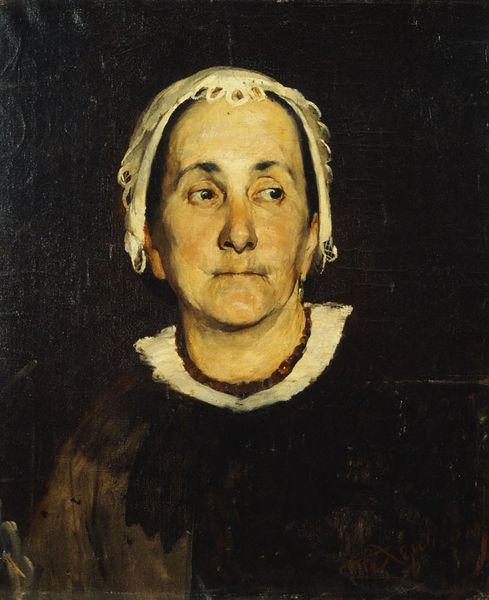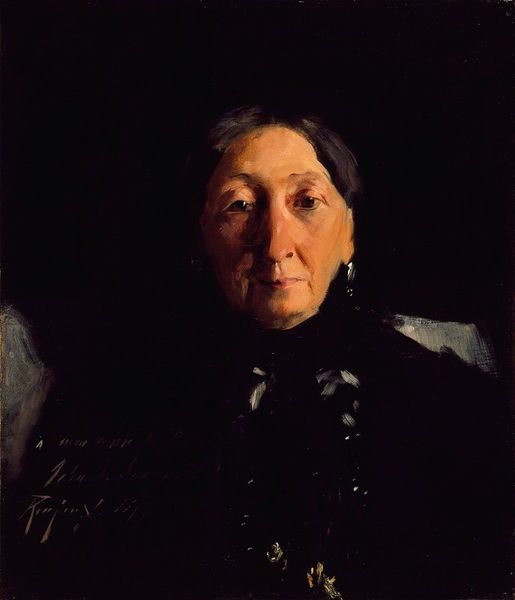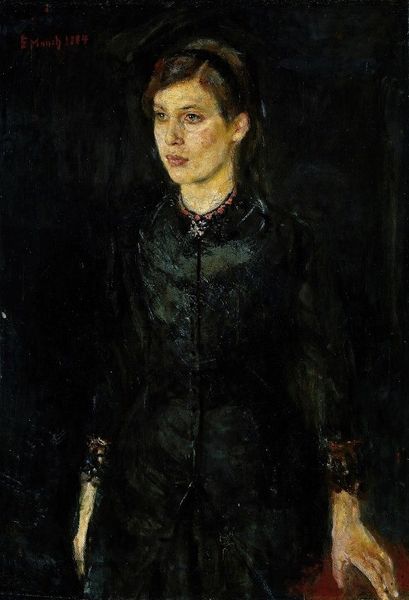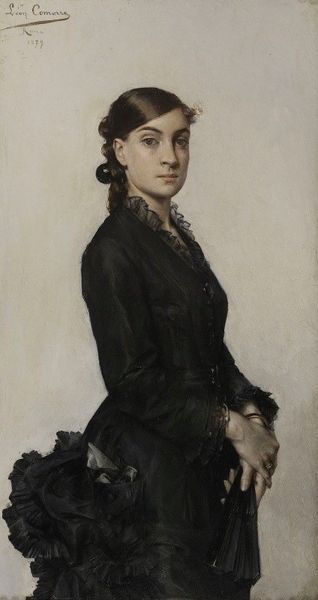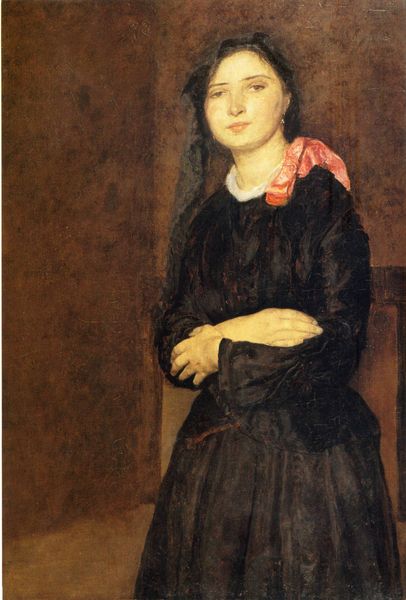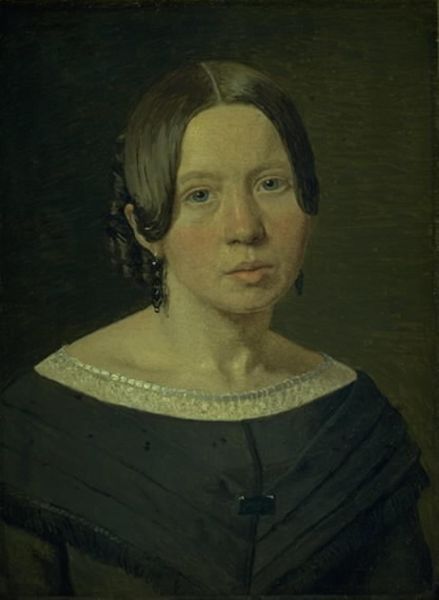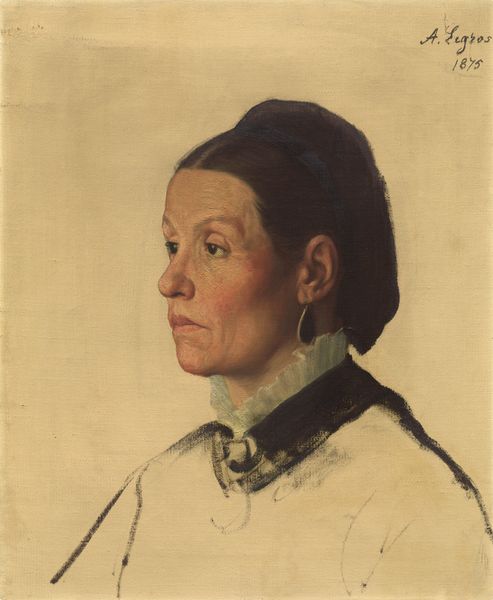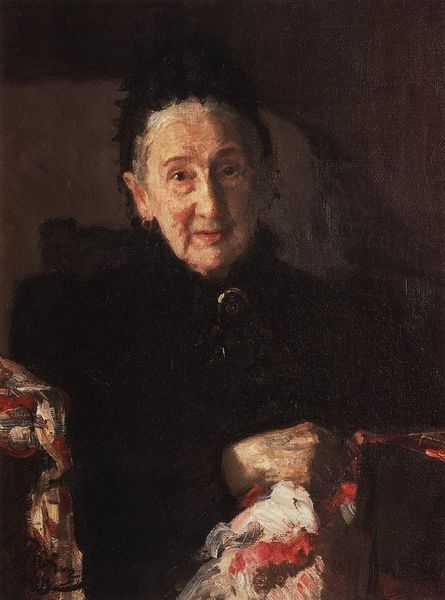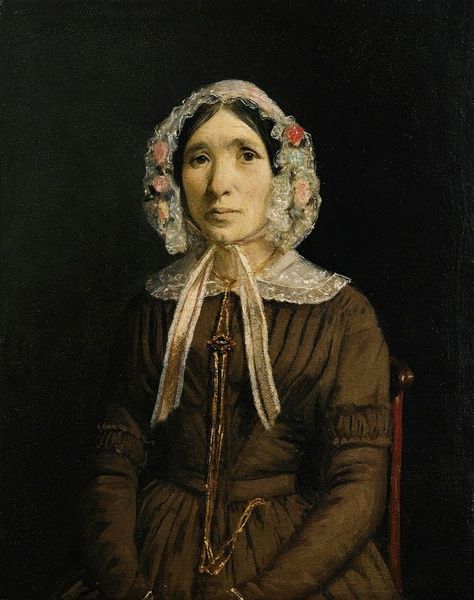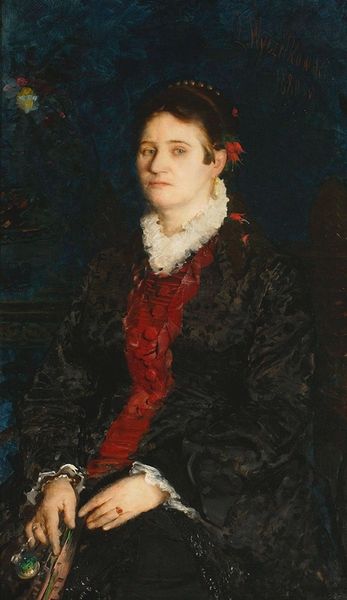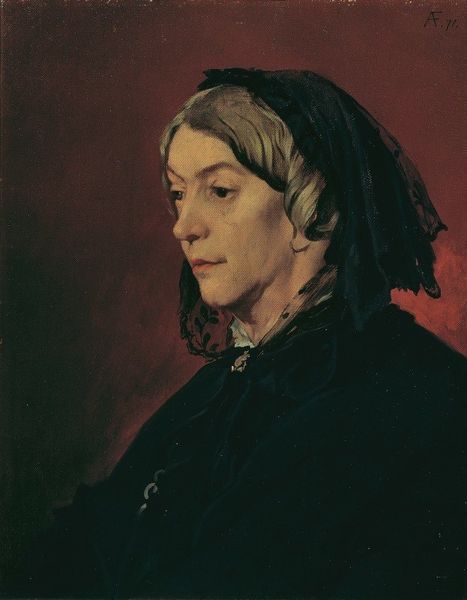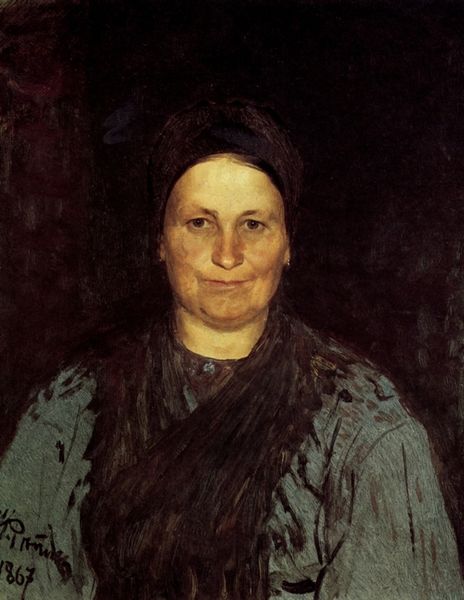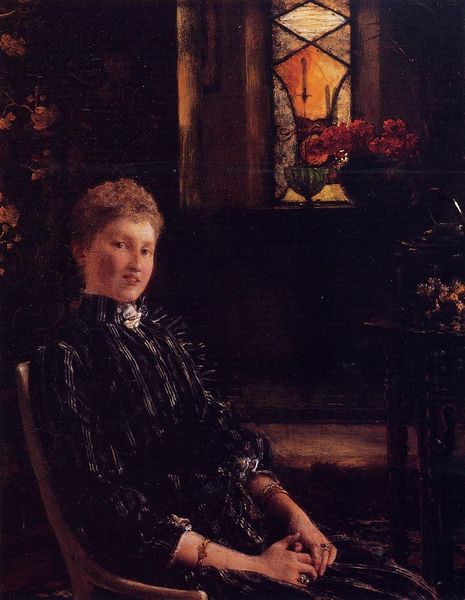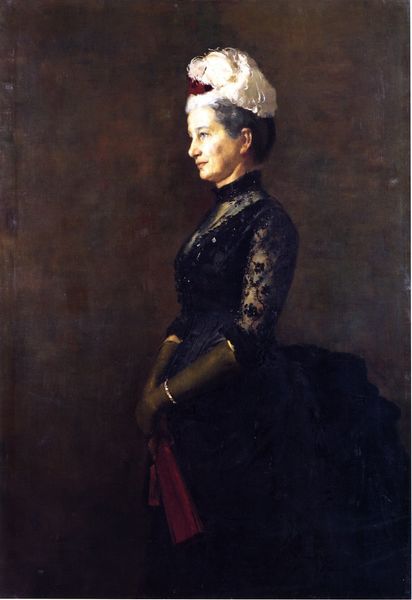
Dimensions: 71.1 x 53.3 cm
Copyright: Public domain
Curator: Welcome to the Spencer Museum of Art. Here we see John Singer Sargent's portrait of "Mrs. Daniel Sargent Curtis," an oil painting completed in 1882. Editor: The striking darkness of the backdrop! It lends a certain gravity to the piece, almost forcing us to contemplate her profile. What materials would give it that specific depth, I wonder? Curator: Indeed. The black likely involved pigments derived from minerals like iron or even carbon, built up in layers to achieve such richness. Think about the availability of these materials in late 19th-century Europe and the societal structures required for an artist to access and utilize them in creating art for the wealthy. Editor: The lace cap, though... it almost acts as a halo, an ethereal contrast against that somber field. It certainly draws your eye up to her face. The pearls, too, just below the neck--a classic symbol, of purity perhaps, subtly indicating status and respectability? Curator: Note how the rendering of the pearls seems secondary to the broader treatment of the materials themselves. The focus seems to be on representing textures--the almost photographic smoothness of the skin contrasting sharply with the dynamism in the brushstrokes of her attire. Look closer, and one recognizes a calculated roughness in areas easily missed by the hurried viewer. Editor: That contrast speaks volumes about the sitter. While seemingly demure in presentation, I also discern hints of defiance in the pursing of the lips and confident angle of the chin. Or perhaps, more than defiance--resolve? A lived-in face hinting at the subtle trials endured across years gone by... Curator: Precisely. Beyond any narrative of personal virtues is the concrete existence of class hierarchies reinforced in Sargent’s labor--where he is making art and, perhaps also unwittingly, reifying social constructs of class, aspiration, and the very possibility of leisurely contemplation in this striking portrait of a wealthy woman from the late 19th century. Editor: Well, the conversation has certainly cast light on both Mrs. Curtis' portrait and our assumptions when viewing portraits, period. Curator: Yes, looking closely at material and object production hopefully brings some context to these older works and the hands that labored.
Comments
No comments
Be the first to comment and join the conversation on the ultimate creative platform.
